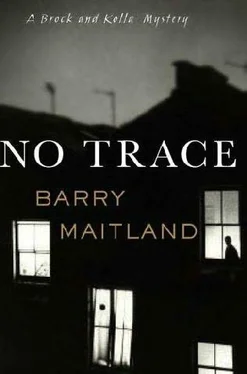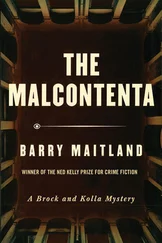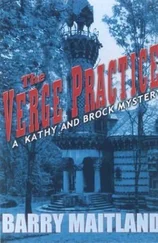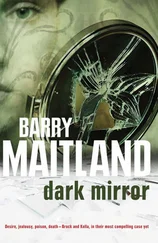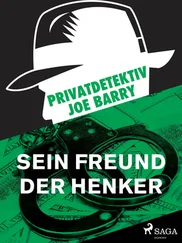Barry Maitland - No trace
Здесь есть возможность читать онлайн «Barry Maitland - No trace» весь текст электронной книги совершенно бесплатно (целиком полную версию без сокращений). В некоторых случаях можно слушать аудио, скачать через торрент в формате fb2 и присутствует краткое содержание. Жанр: Полицейский детектив, на английском языке. Описание произведения, (предисловие) а так же отзывы посетителей доступны на портале библиотеки ЛибКат.
- Название:No trace
- Автор:
- Жанр:
- Год:неизвестен
- ISBN:нет данных
- Рейтинг книги:4 / 5. Голосов: 1
-
Избранное:Добавить в избранное
- Отзывы:
-
Ваша оценка:
- 80
- 1
- 2
- 3
- 4
- 5
No trace: краткое содержание, описание и аннотация
Предлагаем к чтению аннотацию, описание, краткое содержание или предисловие (зависит от того, что написал сам автор книги «No trace»). Если вы не нашли необходимую информацию о книге — напишите в комментариях, мы постараемся отыскать её.
No trace — читать онлайн бесплатно полную книгу (весь текст) целиком
Ниже представлен текст книги, разбитый по страницам. Система сохранения места последней прочитанной страницы, позволяет с удобством читать онлайн бесплатно книгу «No trace», без необходимости каждый раз заново искать на чём Вы остановились. Поставьте закладку, и сможете в любой момент перейти на страницу, на которой закончили чтение.
Интервал:
Закладка:
No trace
Barry Maitland
1
He sighed and his attention strayed to the second item on the table, a letter, neat blue words on cream paper. He set the senior management report aside, picked up the letter and began to read it once again.
Dear David,
I have to put this in writing, because I haven’t been able to find the words to say aloud…
He reached the end and sat lost in thought, feeling the drag of sadness inside him, the weight of time and loss. As if to emphasise this, his eyes moved to a small framed picture on the wall in front of him, a shabby little thing, a gift from a murderer. He remembered his first glimpse of it, long ago, above the mantelpiece of a house in Stepney as he kneeled on the floor with the body of Emily Crab, trying in vain to stop the flow of blood from her throat. Emily had ruined his suit but established his reputation on his first big murder case. Later, interviewing her husband, he had asked about the little picture, saying that it had looked to him like the work of the German artist Kurt Schwitters, whom he greatly admired. Walter Crab had been surprised and gratified by this recognition. He told Brock that during the war his mother had taken in a refugee, a man who had been hunted by the Gestapo from Germany to Norway, before escaping to London. The man was penniless, and Walter’s mother had accepted the picture in lieu of a month’s rent and board. When her friends saw it-an old bus ticket, a scrap of a newspaper headline and other fragments glued to a piece of cardboard-they laughed and told her she’d been had, and Walter had been mortified on his mother’s account. Brock was the first person who had ever admired it, and yes, on the back was the signature K. Schwitters, and the title, Merz 598a, London, 1943. Then Walter confessed to Brock that he had murdered Emily and that the alibi provided by his sister was false. On the day that Crab was sentenced, Brock received a brown-paper parcel in the mail containing the Schwitters and a carefully written note from Walter, gifting him the picture in compensation for Brock’s ruined suit. Ever since, Brock had regarded the little collage as an icon, a condensed statement of his own calling, gathering the discarded residue of people’s lives and making out of it some kind of pattern and sense.
Brock folded the letter and tucked it into the management report to mark the place he’d reached, then turned his attention to the third document on the table, every page of which he’d memorised over the weekend. It was a file marked Metropolitan Police, Case File Summary: Abductions of Aimee Jennifer Prentice and Lee Celine Hammond. He turned to the pictures of the missing girls, although they were already imprinted in his mind; Aimee with a cheeky lopsided grin and Lee, dreamy and pensive, as if she could sense the onset of puberty inside her slight body.
Pinned to the cover of the report was the memo confirming the formation of a Major Enquiry Team, headed by Detective Chief Inspector David Brock, which would take control of the case as from 0800 hours on Monday October 13. Brock checked his watch. Two hours. Time to go. athy drove slowly down the clogged artery of Kingsland Road in Shoreditch, part of the stream of sullen Monday morning traffic splashing cold puddles over the legs of huddled bus queues. She could hear the howl of a police siren somewhere up ahead, and on the radio she picked up the first news reports of another missing girl, the third child abducted from her home in east London in recent weeks.
She made a turn into Lazarus Street and found herself hemmed between the dark brick walls of warehouses under conversion to offices, studio flats and uncertain investment opportunities. Two small girls burst out of a side alley, school bags bouncing on their shoulders, black faces bright with glee, and Kathy stopped to let them pass.
She was impatient. The call had come half an hour before, cancelling the first scheduled meeting of the new Major Enquiry Team and diverting personnel to Shoreditch, and she felt the anticipation itching inside her at the beginning of a new case. She checked the mirror to make sure the girls were clear of the back of the car and caught her own reflection. Serious eyes, official eyes. This is how you get to look in your thirties when you take your job too seriously, she thought. Her hair, very pale in the gloom of the dark street, fell almost to her eyes, and she remembered that she’d booked for a cut that afternoon. She’d have to cancel.
As she moved on she passed the end of a narrow service lane and saw two uniformed police examining a row of dustbins. Ahead she spotted a pulsing blue light at the point where the street opened into a square. The patrol car was parked outside a sandwich shop, Mahmed’s Cafe, with two cops stooped talking to the driver, leaning against the car roof to ease the weight of their protective vests and loaded belts.
Kathy slowed and called across to them.‘Hi, DS Kolla, SO1. Northcote Square?’
‘This is it.’ The man, registering the initials of the Serious Crime Group unit, peered across at her. ‘Better park down here, Sarge. The north end’s chocker.’
As she rolled forward she saw what he meant, a jam of vehicles blocking the far end of the square. She hadn’t been here before, and she had the impression of a rather forbidding place hidden away among the tangle of streets. The square was surrounded by buildings of mixed age and use, mostly in dark red brick, all severe and square-profiled against the grey sky. Theyoverlookedathicklytreed central garden fenced by iron railings. Kathy pulled up beneath a no stopping sign and placed her Metropolitan Police Emergency notice on the dash. One of the uniforms came over to her.
‘That’s the house,’ he said, pointing to a building at the other end of the square behind the densest crush of vehicles and people. Originally two storeys high and rather squat and plain, a further two floors of milky white glass had been added.‘Press have just arrived.’
‘Thanks.’
She saw other uniformed men and women door-knocking and talking to staff arriving for work at offices on the east side of the square. Here on the south side, Lazarus Street, was an old industrial building with a sawtooth roof. Like most of the other older buildings in the area it showed signs of conversion. A large section of ground-floor brick wall had been replaced by frameless glass, through which Kathy could make out white linen on restaurant tables. Red neon letters attached to the parapet announced ‘The Pie Factory’. Someone had sprayed a graffiti message in looping black letters on the brick wall beside the restaurant window: ‘same old shit’.
Kathy crossed to the pavement that snaked around the central gardens, her feet squelching on wet leaves dropped by the brooding trees. Bolted to the railings was a police notice, warning motorists that thieves were active in the area and giving the Crimestoppers’ 0800 number. A logo identified Hackney Borough Police, the operational command unit for this area of the city. There was scaffolding up on part of West Terrace, which formed this side of the square, and some builders had stopped work to see what was going on. A man with a hard hat was leaning out of a windowless hole on the top floor of one of the buildings under reconstruction, passing observations down to his mates on the pavement below. Spotting Kathy, he paused in his commentary and the others turned to check out the blonde. One gave a desultory whistle and another called, ‘Give us a smile, darling,’ but the morning was too dull and their hearts weren’t in it.
There was something of a melee at the top end of West Terrace, where traffic coming to the corner of the square was trying to work its way around stationary vehicles. She saw several cops trying to move people on, and when she reached the place Kathy realised that the problem was a school playground on the other side of the crossing, where small children were arriving with adults, all demanding to know what the police vehicles and press cameras were doing there.
Читать дальшеИнтервал:
Закладка:
Похожие книги на «No trace»
Представляем Вашему вниманию похожие книги на «No trace» списком для выбора. Мы отобрали схожую по названию и смыслу литературу в надежде предоставить читателям больше вариантов отыскать новые, интересные, ещё непрочитанные произведения.
Обсуждение, отзывы о книге «No trace» и просто собственные мнения читателей. Оставьте ваши комментарии, напишите, что Вы думаете о произведении, его смысле или главных героях. Укажите что конкретно понравилось, а что нет, и почему Вы так считаете.
